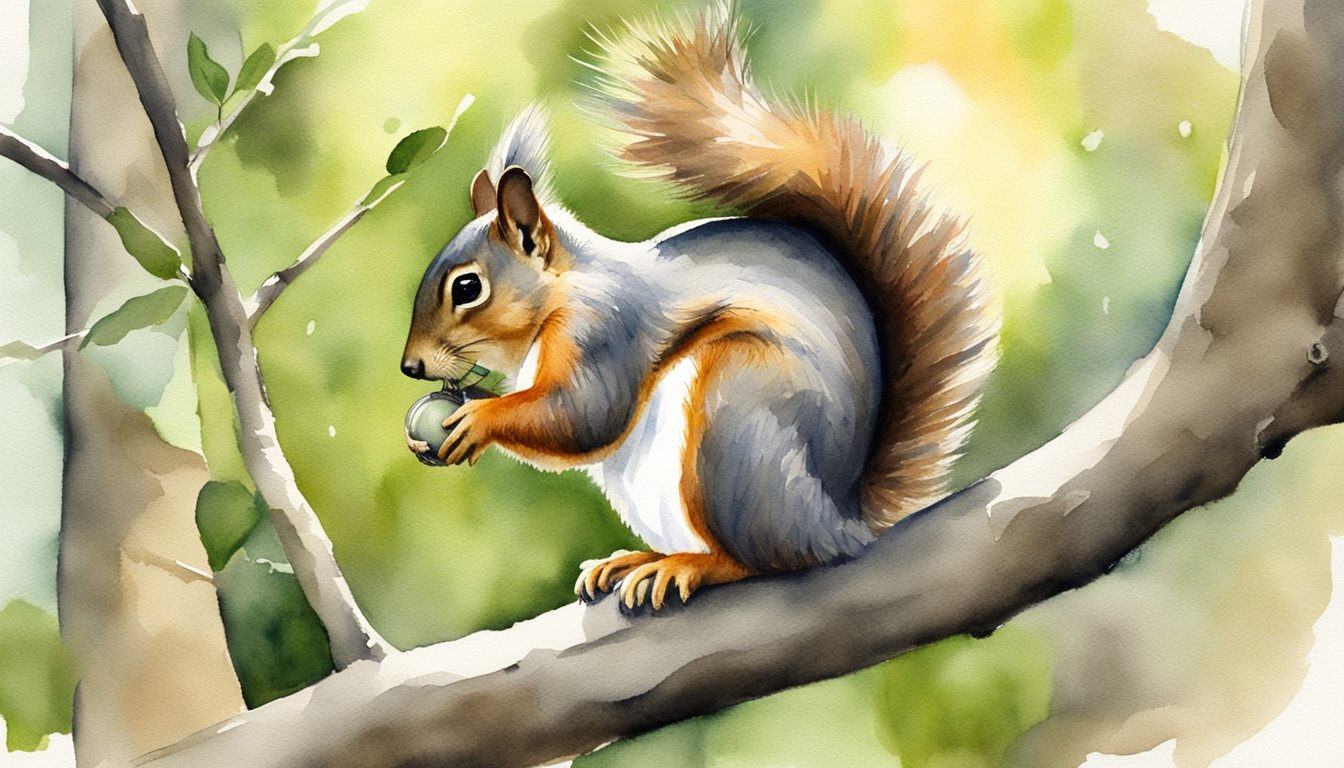Squirrel Overview
Squirrels are diverse and adaptable creatures that come in various species, each with unique physical characteristics and natural habitats. They are an essential part of the ecosystem and exhibit a wide range of behaviors that reflect their adaptability and survival skills.
Diverse Species of Squirrels
Squirrels belong to the family Sciuridae, which includes a variety of species like tree squirrels, ground squirrels, and flying squirrels. The grey squirrel, known for its adaptability, is commonly found in many regions, while the smaller American red squirrel thrives in coniferous forests. On the other end of the spectrum, the tiny African pygmy squirrel is one of the smallest species.
- Tree Squirrels: Includes species such as the grey and red squirrel.
- Ground Squirrels: Contains chipmunks, prairie dogs, and others.
- Flying Squirrels: Possesses unique skin flaps for gliding.
Physical Characteristics
Squirrels vary greatly in size and appearance. The Indian giant squirrel holds the title of the largest known squirrel, measuring up to 36 inches including its tail, while the minuscule African pygmy squirrel weighs just 13 to 20 grams.
- Size Range: From 2.8 to 36 inches in length.
- Weight Range: From 10 grams to 1.5 kilograms.
Natural Habitat
The natural habitats of squirrels are as diverse as their species. They are indigenous to the Americas, Eurasia, and Africa, with some species like the tree squirrels preferring wooded areas, while others, such as the ground squirrels, inhabit grasslands and semi-arid regions. The adaptable grey squirrel can thrive in both urban and rural settings.
- Tree Squirrels: Forests and urban parks.
- Ground Squirrels: Prairies and savannas.
- Flying Squirrels: Dense forests with plenty of trees for gliding.
Squirrels play a significant role in their ecosystems, not only as prey for predators but also as seed dispersers, aiding in forest regeneration.
Squirrel Behavior and Diet

Squirrels exhibit a range of behaviors and dietary preferences that vary according to their environment and species, such as flying squirrels, ground squirrels, and tree-dwelling varieties. They are predominantly omnivores and are known for their complex foraging methods and social interactions.
Feeding Habits
Squirrels have a diverse diet that primarily consists of nuts and seeds, which provide the essential nutrients they require. However, they are also known to consume insects, fruit, and in certain instances – bird eggs. When food is scarce, squirrels may alter their diet to include other available food sources. The act of foraging is not only essential for their daily nutrition but also for building reserves for when food supply becomes limited.
- Nuts/Seeds: Primary source of food, essential for nutrients and fat reserves.
- Fruit: Consumed for their high sugar content and hydration.
- Insects/Eggs: Eaten for protein, particularly when other food sources are not abundant.
Social and Survival Behaviors
Squirrels are generally active during the day, especially in the early morning and late afternoon. Their daily routines involve searching for food, avoiding predators, and interacting with other squirrels. Communication is done through a series of vocalizations, tail movements, and body language to indicate things like alertness and defense. Some species, like ground squirrels, will burrow underground both to live and to store food, while others, such as tree-dwelling species, construct nests. Certain ground squirrels hibernate during the winter to survive periods when food is not readily available, whereas others remain active year-round based on their geographic location.
- Communication: Tail wagging and vocalizations signify various behaviors.
- Active Periods: Diurnal, with peaks in activity in the morning and late afternoon.
- Hibernation: Some species hibernate to conserve energy during colder months.
These squirrels also need to be wary of predators, which include birds of prey, snakes, and larger mammals. Being highly agile and able to move quickly through the trees, or in the case of flying squirrels, gliding from tree to tree, helps them evade many threats in their habitats.

